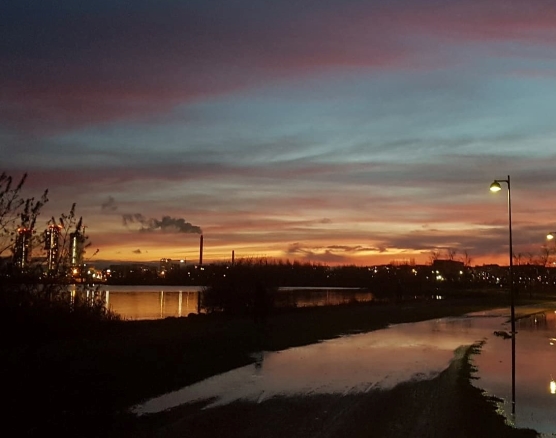
Flooded meadow in Arabianranta/Helsinki. © Saara Lilja.
Inclusion means bringing different people together to create new perspectives. Inclusion is an important part of the joint project of the Finnish Meteorological Institute and the Finnish Environment Institute, which aims to develop guidelines for climate-sustainable regional and urban planning.
The involvement of different people is important because most of the time the decisions taken in an area affect the daily lives of the people in that area. In this way, solutions can be found to issues that would not be solved by traditional means.
“In inclusion, it is important to identify the groups of people who are affected by decisions. This way, the development process does not seem like decisions are made on behalf of the residents without the possibility of influencing the decisions,” says Milla Mikkola, researcher at the Finnish Meteorological Institute.
It is important to use the views of young people, in particular, in inclusion projects, as they will be affected by many decisions for a long time to come. The inclusion of young people, in turn, provides opportunities for young people to see the world of work.
There are also challenges in terms of inclusion. “Certain people are more actively involved than others, meaning that the voices of certain people may not be heard. However, it is important that everyone can make their voices heard, as all the people in the region have needs for the region,” says Mikkola.
Co-creation is a form of inclusion, but often goes beyond that. Inclusion can often be superficial, while co-creation takes different perspectives into account from the very beginning of planning and development. Co-creation has already been used, for example, in the planning of a carbon-neutral urban area in Hiedanranta, Tampere.
Co-creation in Hiedanranta, Tampere, is the starting point for planning
Hiedanranta is the location for a planned urban district for 25,000 inhabitants, the construction of which is planned to begin in 2023. “Hiedanranta is innovative in handling the concept of a sustainable city, and regional planning has made great use of co-creation,” says Mikkola.
Hiedanranta will make use of workshops where research and practice engage in dialogue. Next year, the aim is to organise a workshop that will bring together the expertise of decision-makers, authorities, research institutes, Hiedanranta developers and future residents of the region.
“Hiedanranta's workshops, as well as other workshops, are about trust. By creating trust between us and the participants in the workshop, we will be able to create results that everyone is committed to,” says Mikkola.
Research institutes will also benefit from the cooperation between projects and operators. “For the Finnish Meteorological Institute, like any other research institute, it is important that research data can be applied by the actors, which can be done, for example, through inclusion. This way, we will see how the information is reflected in practice, ”says Mikkola.
In return, the workshops identify what kind of information is needed. Thus, research institutes will know what kind of information is useful and necessary right now.
Cooperation between researchers, companies and residents
It is not only the involvement of residents that is important for inclusion, but also for cities, businesses, research institutes and projects. Good examples of diverse inclusion are the Academy of Finland's ACCC atmospheric and climate center of excellence and the Canemure cooperation between the Finnish Meteorological Institute and SYKE's regional and urban planning.
“The relevance and importance of the Canemure and ACCC projects is underlined by the fact that they are connected in real time with actors that build the climate sustainability of society, such as zoners, with the aim of learning together and harnessing research knowledge in practical solutions,” summarises Saara Lilja, head of the Climate Change and Society group at the Finnish Meteorological Institute.
“Nature-based solutions provide a good way to simultaneously promote climate change mitigation and climate change risk preparedness. The Canemure project prepares guidelines for climate-sustainable zoning, co-developing them at the zoning level where the key challenge at the moment is linking climate change mitigation and adaptation to change,” Lilja says.
Cooperation between different actors reflects the dimensions of sustainable development: ecological, economic and social. For example, companies are thinking about achieving a sustainable economy, residents are thinking about social dimensions, such as recreational opportunities and meeting places, while research questions from research institutes relate to different dimensions of sustainability, which should always be included in inclusion and regional planning.
Learn more
Further information
- Head of Unit Saara Lilja, Finnish Meteorological Institute, firstname.lastname@fmi.fi, tel. +358 (0)50 344 6066